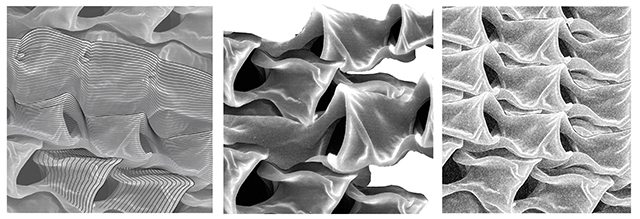

For some, architecture begins with space itself. From this point of view, the value of a design may be found in the way in which formal structures are employed to demarcate space with a nuanced ambiguity, and in an attention to how space and form are perceived on an elemental level. But if we are to look for a point of departure in an understanding of space itself, how do we define space? The particular qualities and metrics we marshal in the service of answering this question forms what we might call the "essential vocabulary" of architecture, a position that seeks for architecture to be liberated from external references.
This project adopts a formal point of departure, and begins with an analysis of a scanning electron microscope (SEM) image taken from nature. Working through two-dimensional collage media, students will identify formal and spatial characteristics inspired by the SEM image, and distill them into an abstract language. In a similar fashion to earlier exercises, value in this collage will be found less in how well it adheres to the "truth" of its origin (the given image), and more in the internal compositional relationships found in the abstract language that are developed. In other words, while originating in structure of nature, the formal logic of each composition will stand on its own in the context of the abstract space of the collage. These abstract collages form the basis of an iterative exploration that moves through orthographic projection, folded paper models, and finally arrives at a design proposal adapted to the specific conditions of the site and program addressed by the studio. While 'projected' into the separate spaces of model, drawing, and through these into the space of the Point Bonita site, this departure posits that the abstract formal logic remains paramount.
Starting with an image taken by a scanning electron microscope (SEM) of an ocean-dwelling lifeform, students select a portion of this image in which they find some compelling spatial characteristics, and which both display transitions from one spatial state to another. For example, one may select an area in which a transition from a closed cellular structure to a more open and fluid one may be observed, or from a ordered, symmetrical structure toward a more chaotic region. These spatial characteristics will be selected from among a limited vocabulary of spatial ideas, which may include those listed below. Students then crop and scale the chosen image to an 6"x6" square region in a way that isolates the phenomenon in question, and produce an analytic overlay using linework which calls out its characteristics.
repetitive self-similar / modular helical whirling / vortical porous opaque / translucent / transparent layered / laminated / laminating / delaminating radial / bilateral bifurcating / fused folded hinged tangential / centered spiraling overlapping / interlocking *multiply / unified
Using two-dimensional photo manipulation and collage techniques in Photoshop and Illustrator, students produce two manipulated versions of the chosen image such that the spatial phenomenon of interest is amplified. They pay careful attention to the way that figure-ground relationships, regulating lines, and tonal variations produce a spatial reading in these collages. While only working in two-dimensions, they notice how these graphic devices can imply three-dimensional forms and spaces, and deploy them such that a multitude of complimentary readings may be applied to your composition. The resulting collages should display an amplified phenomenon found in the initial SEM image.
Working within a 10" cubic volume, students compose a set of spaces that exhibit the qualities of the two collages produced in the previous step. Remember that this ought be regarded as a composition of spaces and not of objects. As such, pay careful attention to the way that figure-ground relationships and regulating lines produce a spatial reading. While this spatial construct is to be considered as occupiable, it is without scale or orientation. Like the collage, a spatial reading is to be produced without explicit reference to an occupant or viewer.
Produce this spatial construct within the bounds of 10" cubic volume, and constructed of paper. The paper used ought to be of heavy stock, white in color, and smooth (but not glossy) in texture. Fasten planes of paper together using only white glue (Elmers or Sobo). The final construction ought to hold together in a single piece, be able to stand on its own without additional prop or crutch, and reference no base or ground. It is to be spatially understood in any orientation.
Students consider the construct produced in the previous step as a set of spatial configurations on the Point Bonita site, and facilitating the possible occupation described in the attached document. The basic function of the applied spatial construct is to act as a bridge on the selected site, and the configuration of your proposed design and the site must enter into a strong dialog. Proportionally speaking, the width of your proposed architecture must not be more than half its length.
Students construct a physical model to scale using the same paper and parameters as step three. Site this model on a representation of the site topography, constructed out of cardboard (hand-cut from topo lines).
Students draw a site plan of their proposed design to scale, and two site sections running in perpendicular directions.

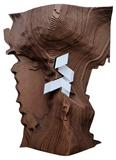
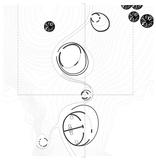
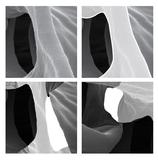
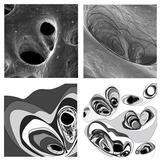

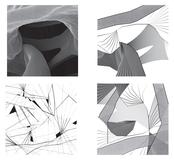
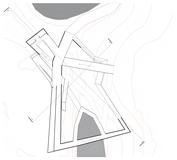
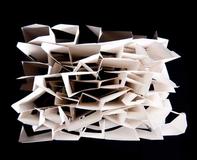




There's more!
Some other projects from this same class have been posted, as well as some interesting student work from this same year.